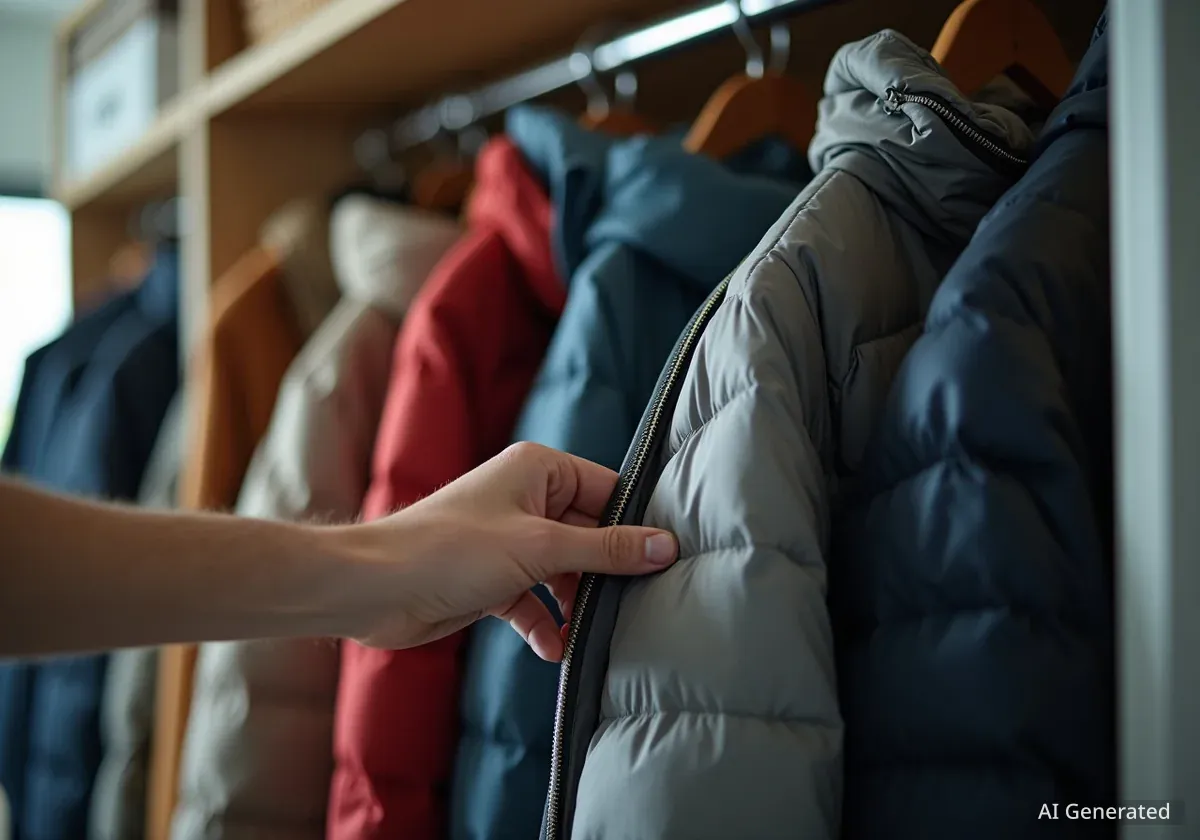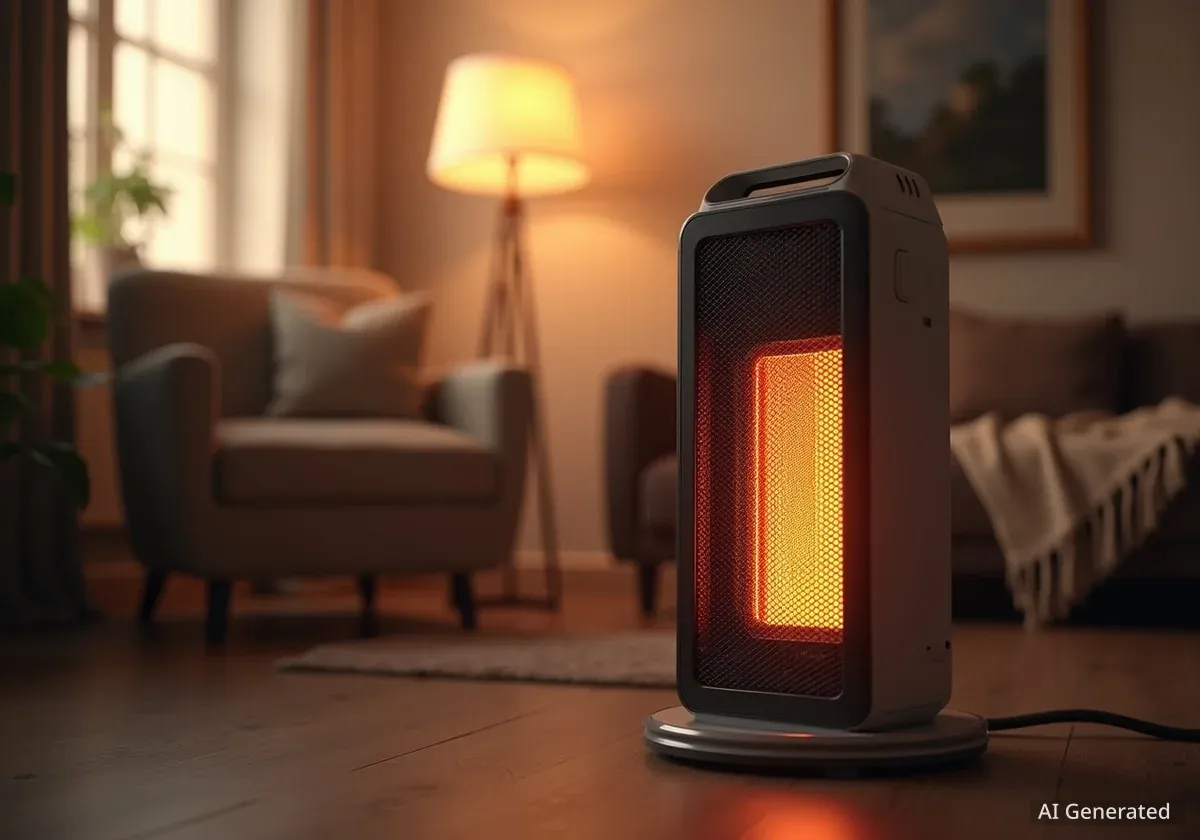As cooler temperatures arrive, parents often seek versatile outerwear that keeps children warm without being bulky. Fleece jackets have become a popular choice due to their unique combination of lightweight material and effective insulation, making them suitable for a wide range of activities from school days to outdoor adventures.
Understanding the specific materials, features, and proper care instructions can help families choose a jacket that offers both comfort and durability. A well-chosen fleece can serve as a primary outer layer in the fall and spring or as a crucial mid-layer for insulation during the winter, providing value across multiple seasons.
Key Takeaways
- Fleece is a synthetic material made from polyester, valued for its warmth, light weight, and moisture-wicking properties, making it ideal for active children.
- Essential features in a child's fleece jacket include a secure zipper for easy use, a hood for extra protection, and functional pockets.
- Proper sizing is crucial for comfort and effectiveness; jackets should allow for layering without being overly restrictive.
- Care instructions, such as low-temperature washing and avoiding bleach, are important for maintaining the fabric's softness and insulating capabilities.
Understanding Fleece as a Technical Fabric
Fleece is a synthetic fabric derived from polyester. Its structure is designed to mimic the insulating properties of wool but with several distinct advantages, particularly for children's clothing. The material is known for being exceptionally lightweight while providing significant warmth.
Unlike natural fibers such as cotton, which can absorb moisture and become heavy, polyester fleece is hydrophobic. This means it repels water and dries quickly, a critical feature for keeping active children comfortable and dry. The fabric's construction traps air in small pockets, which provides excellent insulation against the cold.
Benefits for Active Children
The combination of warmth and low weight makes fleece an excellent choice for kids. It allows for a full range of motion, which is essential for playtime, sports, and other physical activities. The soft texture is also comfortable against the skin, reducing the likelihood of irritation that can occur with rougher materials like wool.
From Outdoor Gear to Everyday Wear
Originally developed in 1979 as a synthetic alternative to wool for high-performance outdoor apparel, fleece quickly gained popularity. Its durability, insulating properties, and ease of care made it a practical choice that eventually transitioned from specialized gear into mainstream fashion, especially for children's everyday outerwear.
Key Features in a Child's Fleece Jacket
When selecting a fleece jacket for a child, several design elements contribute to its functionality and comfort. These features are often standard in well-designed children's outerwear and address the practical needs of both parents and kids.
Hood and Zipper Design
A hooded jacket offers additional protection from wind and cold, covering the head and ears. For children, a full-zip closure is often the most practical option. Zippers allow for easy temperature regulation and make it simple for young children to put on and take off their own jackets, fostering independence.
Pockets and Practicality
Pockets are a highly functional feature in children's coats. Many designs include two front pockets that serve a dual purpose. They provide a warm place for hands on chilly days and offer a convenient spot for carrying small items like toys, snacks, or treasures found during outdoor play.
Material and Construction
Most children's fleece jackets are made from 100% polyester. Some may be described as heavyweight fleece, which indicates a denser fabric designed for greater warmth. This type of material is particularly suitable for colder days in fall and winter. The lightweight nature of the polyester ensures that even a heavyweight fleece does not feel cumbersome to a child.
Understanding Fabric Weight
Fleece fabric is often categorized by weight, measured in grams per square meter (g/m²). Lightweight fleece is typically around 100 g/m², midweight is 200 g/m², and heavyweight is 300 g/m² or more. Heavyweight fleece provides the most insulation and is best suited for cold conditions.
Sizing and Seasonal Versatility
Choosing the correct size is essential for ensuring a fleece jacket performs as intended. A jacket that is too tight can restrict movement and limit the ability to layer clothing underneath. Conversely, a jacket that is too large can be clumsy and less effective at trapping body heat.
Finding the Right Fit
Children's fleece jackets are typically available in a wide range of sizes, often corresponding to age, such as 3T, 4T, 5T, and extending up to sizes for children aged 7-8 and 9-10 years. It is always recommended to consult the manufacturer's size chart, as sizing can vary between brands. A good fit should allow for a sweater or long-sleeved shirt to be worn comfortably underneath.
A Jacket for Multiple Seasons
The versatility of a fleece jacket makes it a practical investment. It can function as a standalone piece of outerwear during the milder days of fall and spring. In the cold of winter, it serves as an excellent mid-layer, worn under a waterproof or windproof shell to provide a robust insulation system.
According to apparel experts, layering is the most effective way to stay warm in cold weather. A fleece jacket acts as an ideal insulating layer because it traps heat efficiently while allowing moisture vapor to escape, preventing the wearer from feeling damp.
Care and Maintenance for Longevity
Proper care is crucial for maintaining the quality and performance of a fleece jacket. While fleece is a durable material, following specific washing instructions can preserve its softness and insulating properties for a longer period.
Washing and Drying Instructions
For best results, it is often recommended to hand wash fleece or use a gentle, low-temperature cycle in a washing machine. Using cold water helps protect the synthetic fibers from damage.
- Avoid Bleach: Chlorine bleach can break down the polyester fibers, causing the fabric to become brittle and lose its softness.
- Tumble Dry on Low: High heat can damage or even melt the synthetic fibers of fleece. Tumble drying on a low or no-heat setting is the safest option. Air drying is also an excellent alternative.
- Do Not Iron: Ironing is not necessary and can permanently damage the fabric.
By following these simple care steps, a child's fleece jacket can remain a reliable and comfortable piece of outerwear for several seasons.





